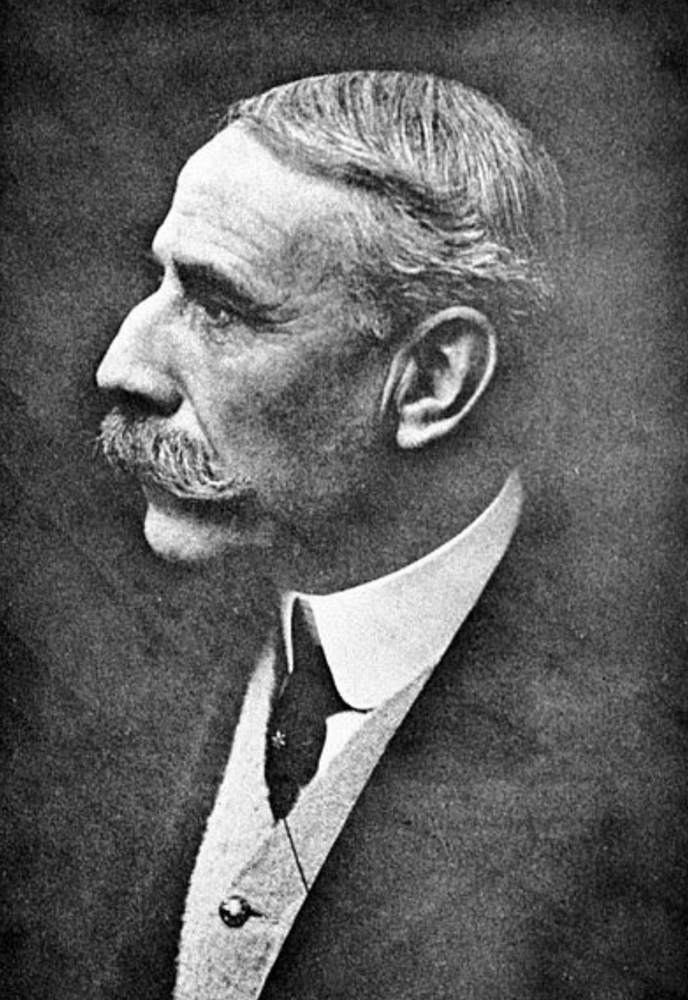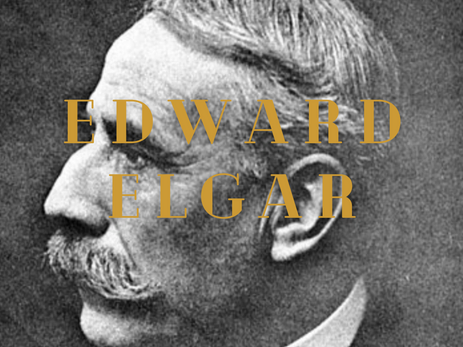Uncategorized
Sir Edward Elgar: The “Outsider” Who Became an Icon
Notoriously known for his “Pomp and Circumstance” march that became a classic graduation tune and a British patriotic symbol, we take a closer look at the life of this prominent composer.

Edward Elgar was a composer and multi-instrumentalist born in 1857 in Worcestershire, England. His main instrument was the violin which he learned to play at age seven but he was advanced at bassoon too.
He was born into a humble family of musicians and tradesmen. He would usually study music in his father’s music shop. Despite having lessons for his instruments, Elgar was a self-taught composer and it took him a while to gain recognition for his works; he was known as an outsider, not only for his music but in social situations as well. His family roots, his catholicism in protestant Great Britain and his autodidact composing training were quite rejected by his contemporaries, so he didn’t see success until his forties.
However, once he did gain the respect he deserved he was labelled as one of the greatest British composers and one of the leading European composers of his generation. Why both, you may ask? Well, this is because his influences were from all over Europe, which is what made him so unique.
Elgar fell in love with one of his pupils, Caroline Alice Roberts, and ended up marrying against her families wishes in 1889. Her family believed that she was marrying beneath herself as Elgar’s parents didn’t have the most desirable jobs or a “matching” social status. Nevertheless, they lived a happy and fulfilling married life. It was said that his life with Caroline had a tremendous impact and was a vital driving force to Elgar’s career. She believed in his capabilities so much that she would organise the household and be at his beck and call for all of his comforts; she would draw the baronies in his scores to save time and also walk in all kinds of weather to post parcels and manuscripts. It can be said that without her, Elgar would not be the composer we now know.
Because of this, Elgar was able to publish 150 diverse and separate musical works of varying lengths. However, in 1920 Elgar’s wife passed away and subsequently so did Elgar’s inspiration to carry on composing. Saddened by his bereavement and by the social and musical changes brought about by the war, Elgar was close to retirement, living his life as a countryman in Worcestershire with his dogs. During that time, the most he did musically was sometimes emerging for the occasional visit to London or a conducting or recording assignment.
Despite dying a year before Berg, Elgar’s music remained firmly rooted in the late-Romantic tradition. He not only ignored the trends of modernism, but he also disdained the waves of English folksiness that the subsequent generation of British composers led. His works were regarded as “English” in a stylistic sense because they defined an English music model that he created.
Elgar was knighted in 1904 and, in 1911, a member of the Order of Merit. In 1920 he received the Commander’s Cross of the Order of the Crown of Belgium. In 1924 he was appointed Master of Royal Music, the following year he received the Gold Medal from the Royal Philharmonic Society and in 1928 he was made a Knight Commander of the Royal Victorian Order (KCVO). In 1931 he was made a baronet, note 19 of Broadheath in the county of Worcester and in 1933 he was knighted Grand Cross of the Royal Victorian Order.
When he eventually died in 1934, Elgar was in the process of writing his third symphony, a piano concerto and an opera. Luckily there’s plenty of Elgar’s works to enjoy up until today, and here’s a brief selection of them:
Concerto In E minor, Op. 85
This was arguably one of Elgar’s most famous concerts. It contained four movements instead of three, a feature that already returned to the piece unique and particular. The piece has a nostalgic and melancholic tone, something that since the First World War was considered outdated by a public keener to jazz and modernism. However, Elgar had been ill and depressed during the war, as he witnessed it destroy the things he loved and killed the people he admired. The result: a very emotional composition, a reflection of his feelings during the time.
First performed in London in October of 1919, the conductor of the rest of the programme over-ran his rehearsal schedule for other works, and didn’t allow enough time for Elgar to prepare the orchestra, making the first performance less successful than he had hoped. Luckily, he had many German friends who applauded the composition before the British audience gave him a chance. Interestingly, it was not until Elgar passed away that a recording of his concerto performed by ,Jacqueline du Pre’ in 1965 made it popular. It was said that the cellist, who was 20 at the time, made it sound youthful and therefore was recognised as a masterpiece.
https://www.youtube.com/watch?v=OPhkZW_jwc0&ab_channel=Ji
Variations On An Original Theme (Enigma), Op. 36
The Enigma Variations were first performed on 19th June 1899 at St. James’s Hall, London. The creation came about when Elgar returned from teaching the violin and decided to unwind from his busy day by sitting at the piano and improvising. His wife complimented his creation and sparked a conversation between the two on how they believed each friend would interpret and play it. As a result of this, Enigma Variations with its dedication: “To my friends pictured within” was born.
Two enigmas are underlying the variations: The first is the identity of each of the ‘friends pictured within’, But Elgar himself hinted at and encouraged speculation over. The second one is a musical enigma, a popular tune that does not appear in the variations but is the theme of the counterpoint.
One of these variations became notably popular, the “Nimrod” Variation VIII Allegretto “W.N”, dedicated to his friend August Jaeger.
https://www.youtube.com/watch?v=vLNLvcBmoqo
The Dream Of Gerontius, Op. 38
This is based on a poem about the journey of a man’s soul after death. Gerontius -the title of this composition- can be translated as an old man, and the story begins when he’s taken apart of his friends who are praying around him on his deathbed. Towards the climax of Elgar’s work, the man is guided by an angel, and he is confronted by the unexpected sight of God. Gerontius’ soul is led away by The Angel who takes her leave singing the aria-like ‘Softly and Gently’ before the work is brought to a close.
Elgar was given a copy of the poem in 1889 as a wedding present. But, whilst he undoubtedly toyed with the idea of setting it to music, the decision to do so for the Birmingham festival in 1900 never seemed to happen. The first performance on October 3rd 1900 was not a success. Neither W.C. Stockley, the chorus master nor Hans Richter, the conductor, fully grasped the complexity of the work. Like what happened in the first British performance of his Concerto in E minor Op. 85, there was no sufficient rehearsal time and therefore it didn’t make much of an impact on the audiences. It wasn’t until after the German premiere in Dusseldorf in 1901 under Julius Buths conduction, and a British performance in March of 1903 by the Hallé Orchestra -with Elgar himself conducting- that the work achieved the recognition it so rightly deserved.
https://www.youtube.com/watch?v=rnwmVypRY-g
Pompe and Circunstamce Marches, Op. 39
This series of 5 Marches are possibly Elgar’s most famous and recognized work around the world, especially March No.1 on D which premiered alongside March No.2 in Liverpool in 1901, with the Liverpool Orchestral Society. It was a great success and both marches were played two days later at the London Promenade Concert at London’s Queen’s Hall, conducted by Henry Wood. After the concert the public asked for a double encore, becoming the first and only time that something like this happened in the history of the Proms.
In 1902 the melody “Land of Hope and Glory” was modified and adapted for the “Coronation Ode” of King Edward VII, becoming a very patriotic song, also considered an unofficial anthem of Great Britain. It became a fixture on Last Night of the Proms and a very popular piece used at college graduations and sporting shows in the US, Canada, and the Philippines. Popularly called “Pomp and Circumstance” or “The graduation march“.
It was first performed in a graduation context in June 1905 at Yale University. Elgar was invited by music teacher Samuel Sanford to receive an honorary doctorate in music, and the New Haven Symphony Orchestra, the College Choir and different New York musicians came to perform two parts of Elgar’s oratorio “The Light of Life“And as the graduates and officials marched, they played “Pomp and Circumstance”. Nowadays is commonly used in almost every Graduation ceremony held in the USA.
https://www.youtube.com/watch?v=Vvgl_2JRIUs
Which is your favourite Edward Elgar work?

